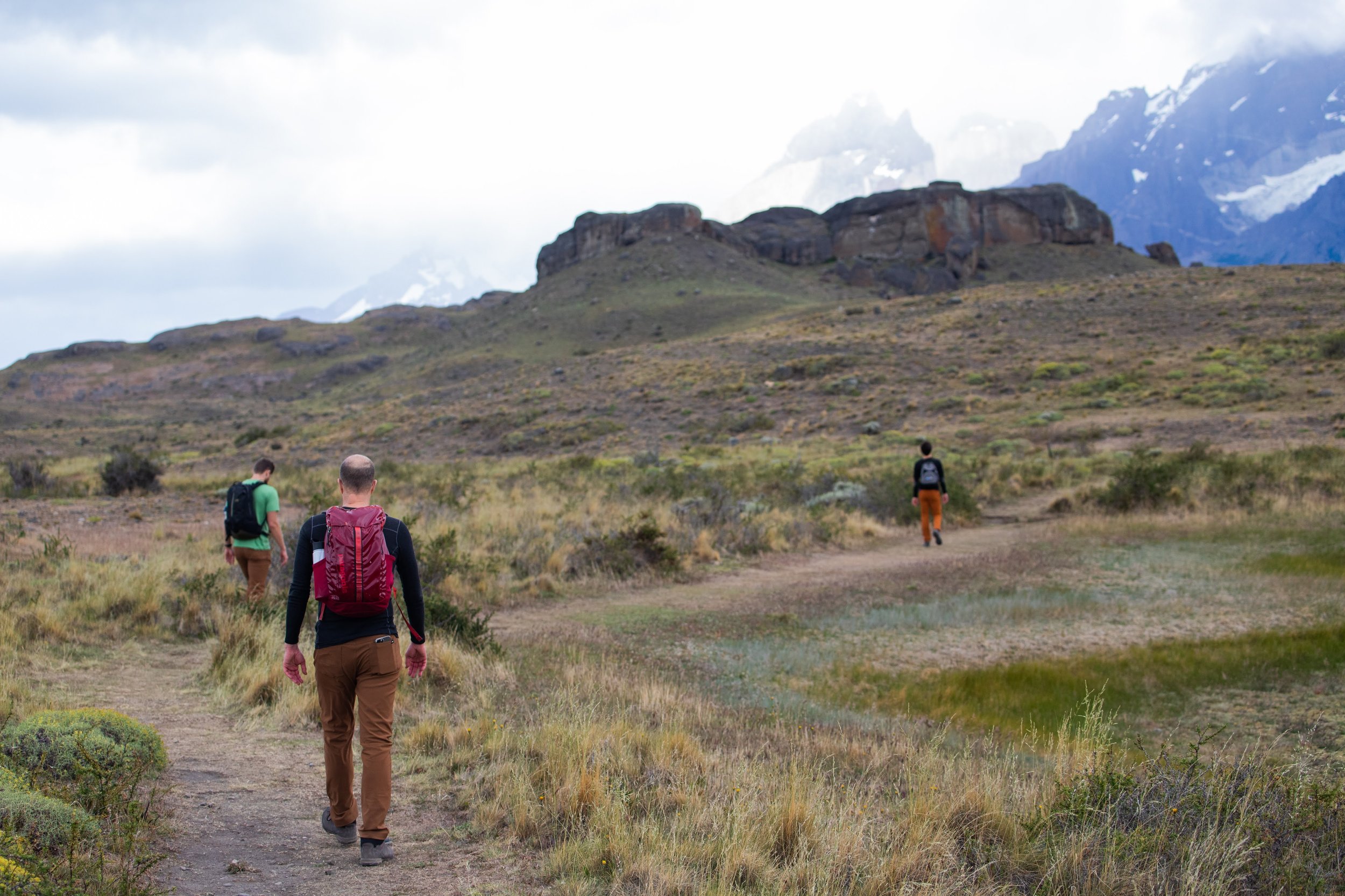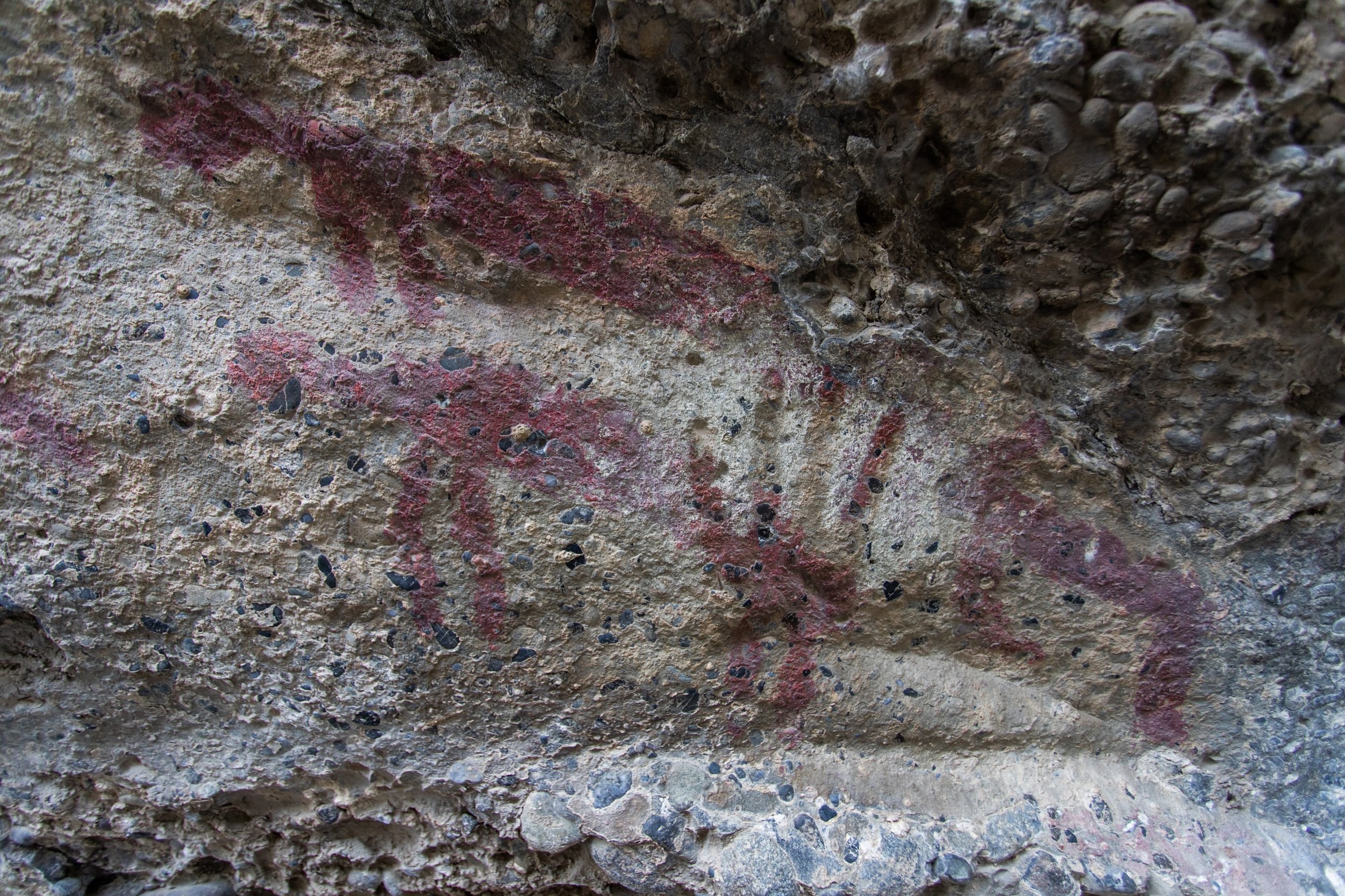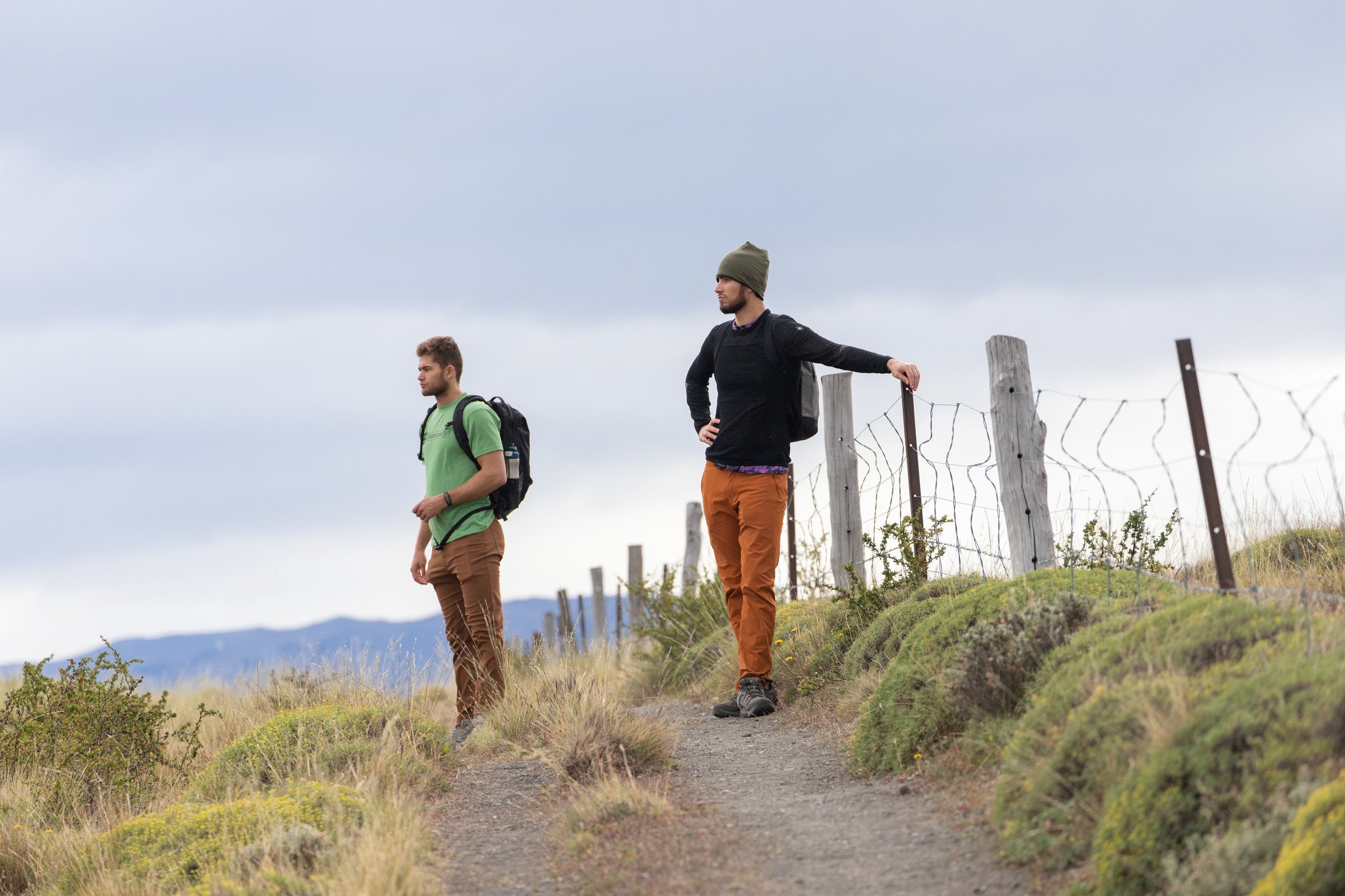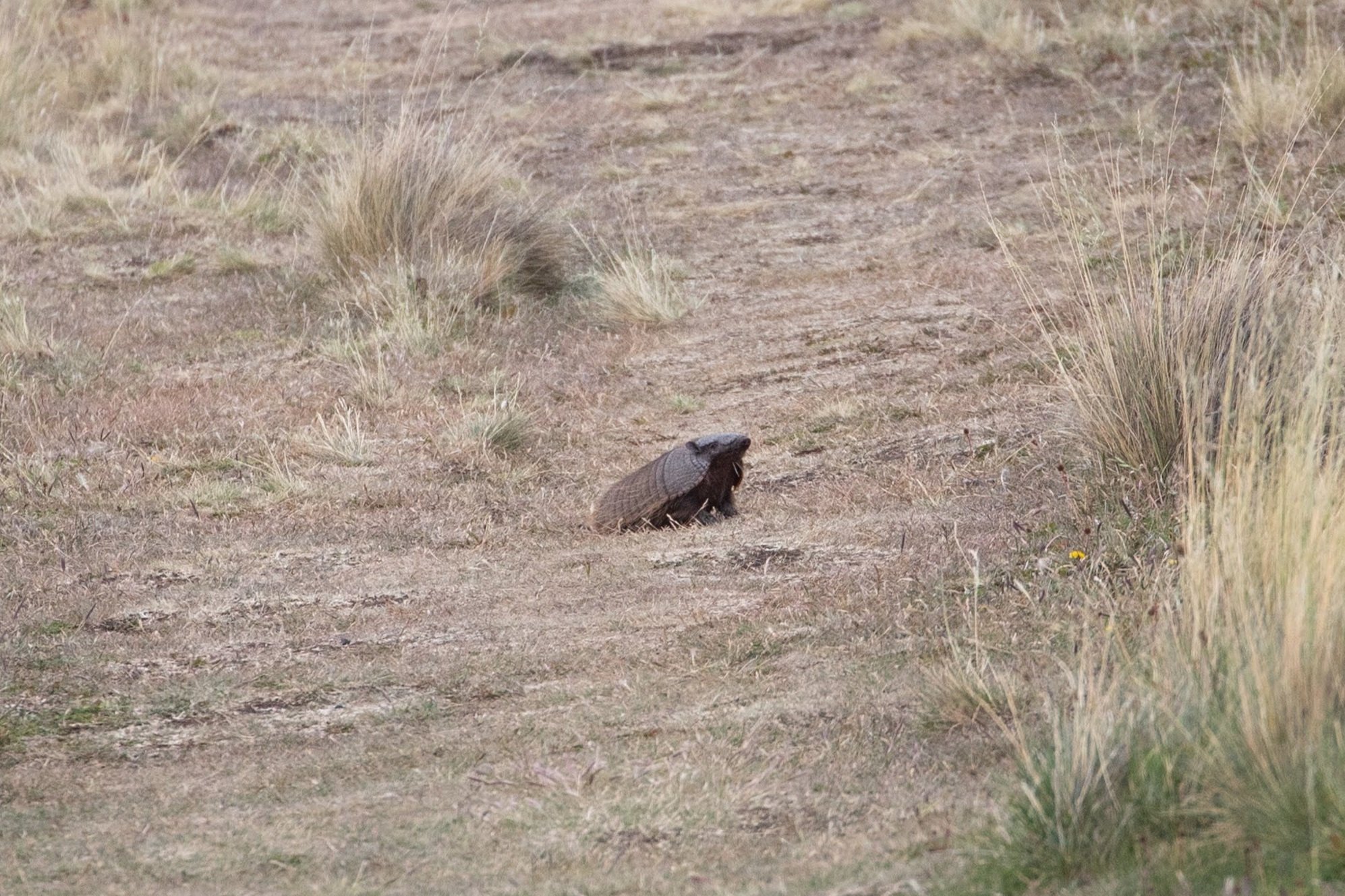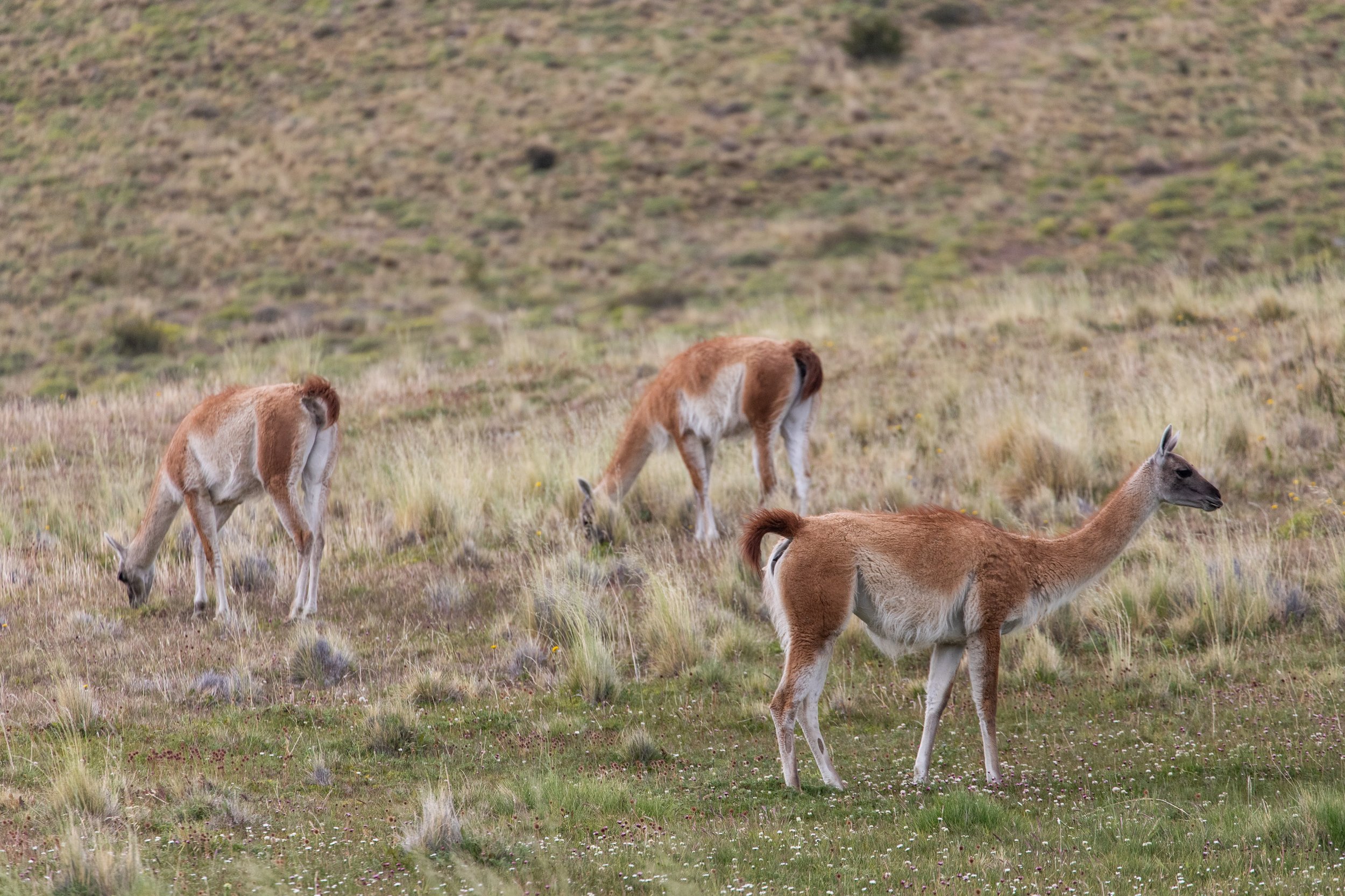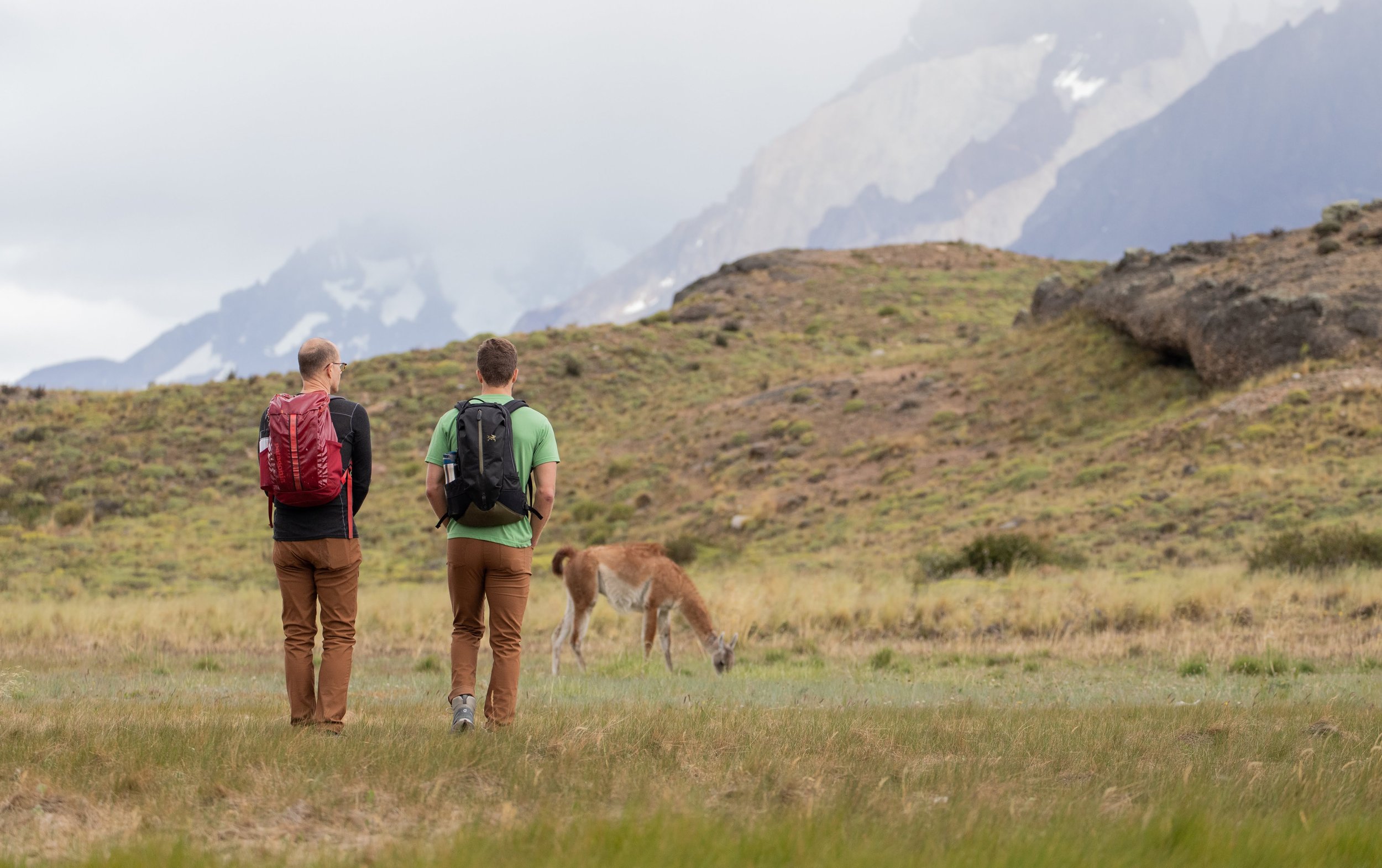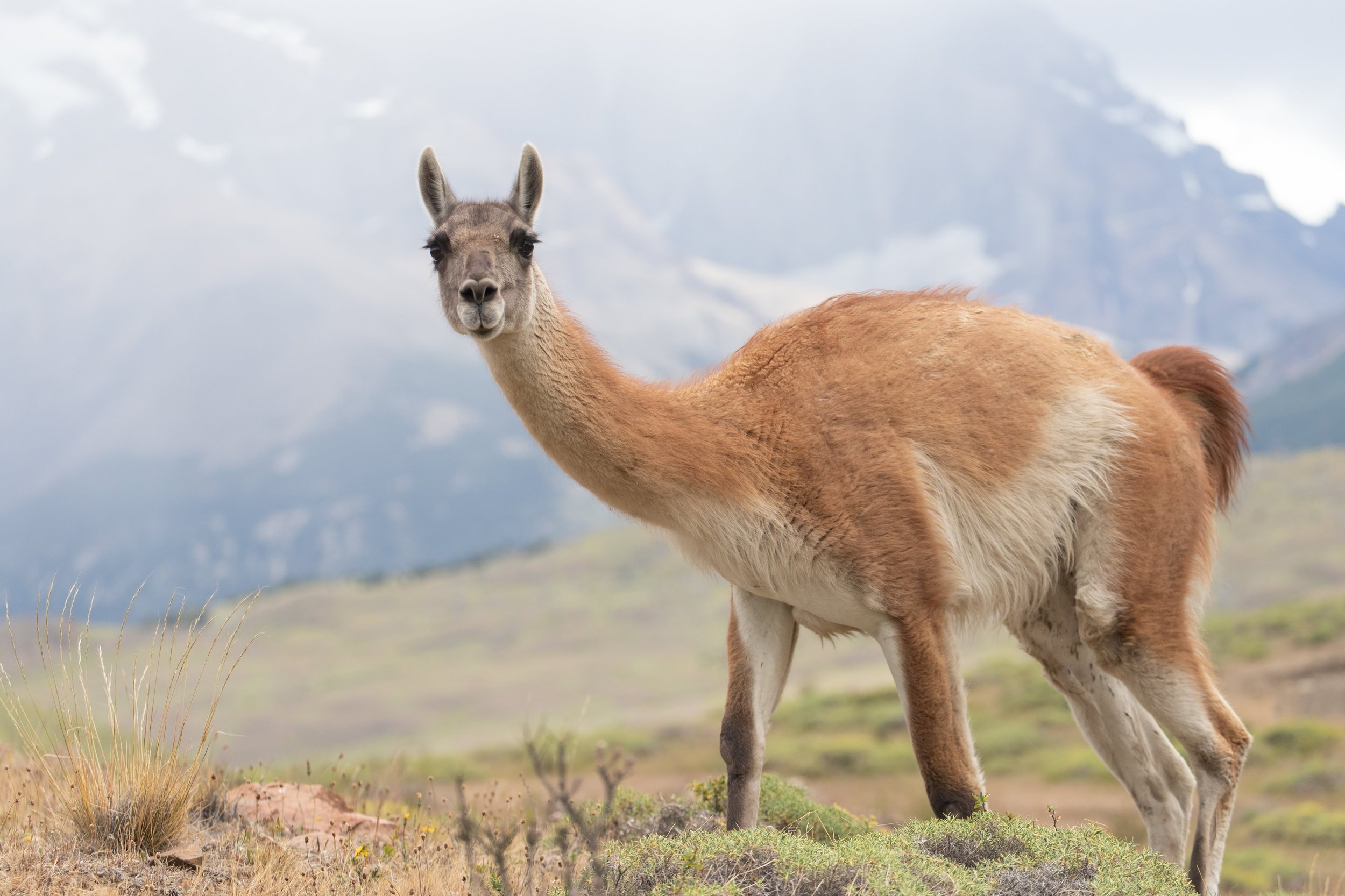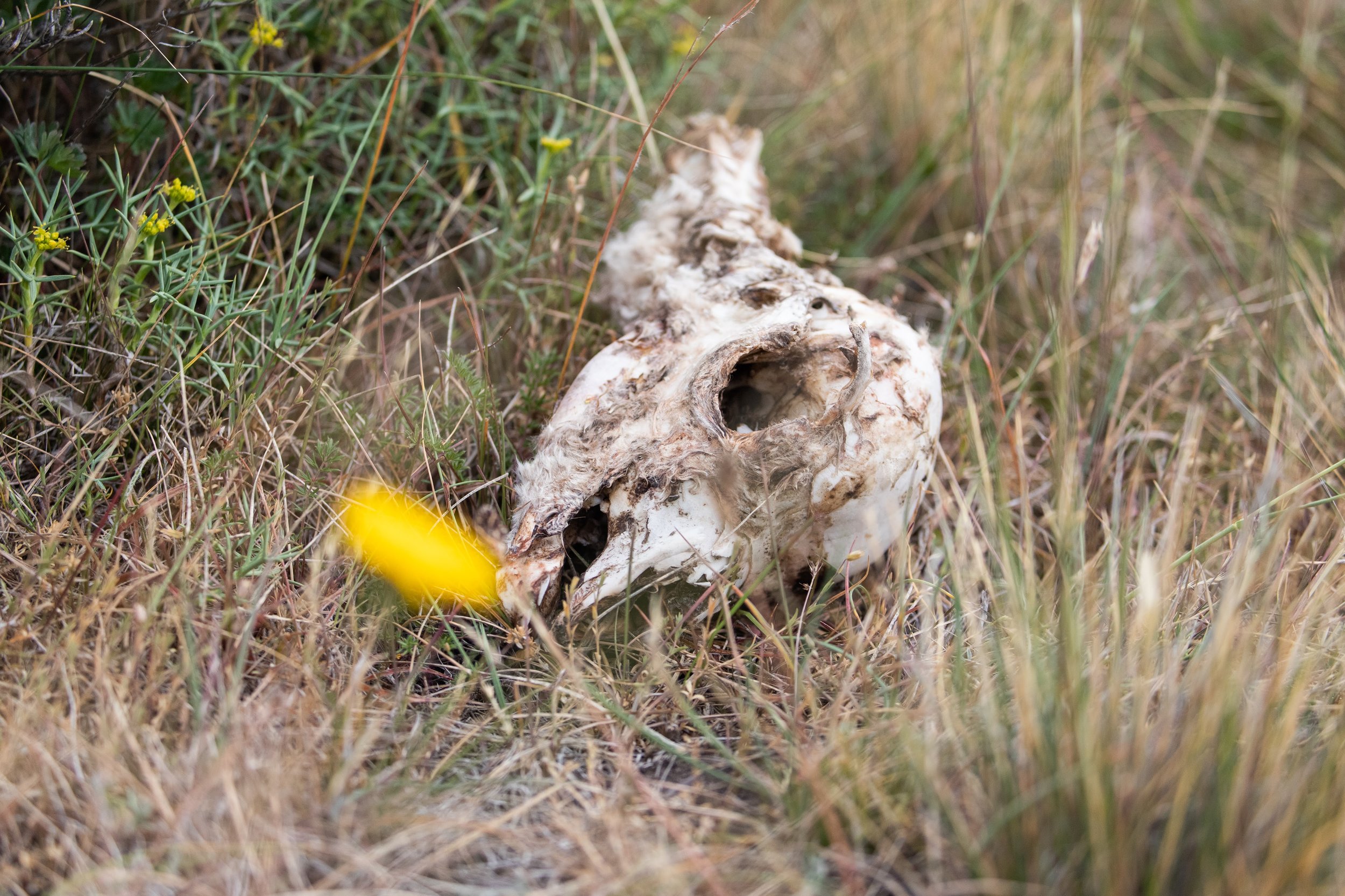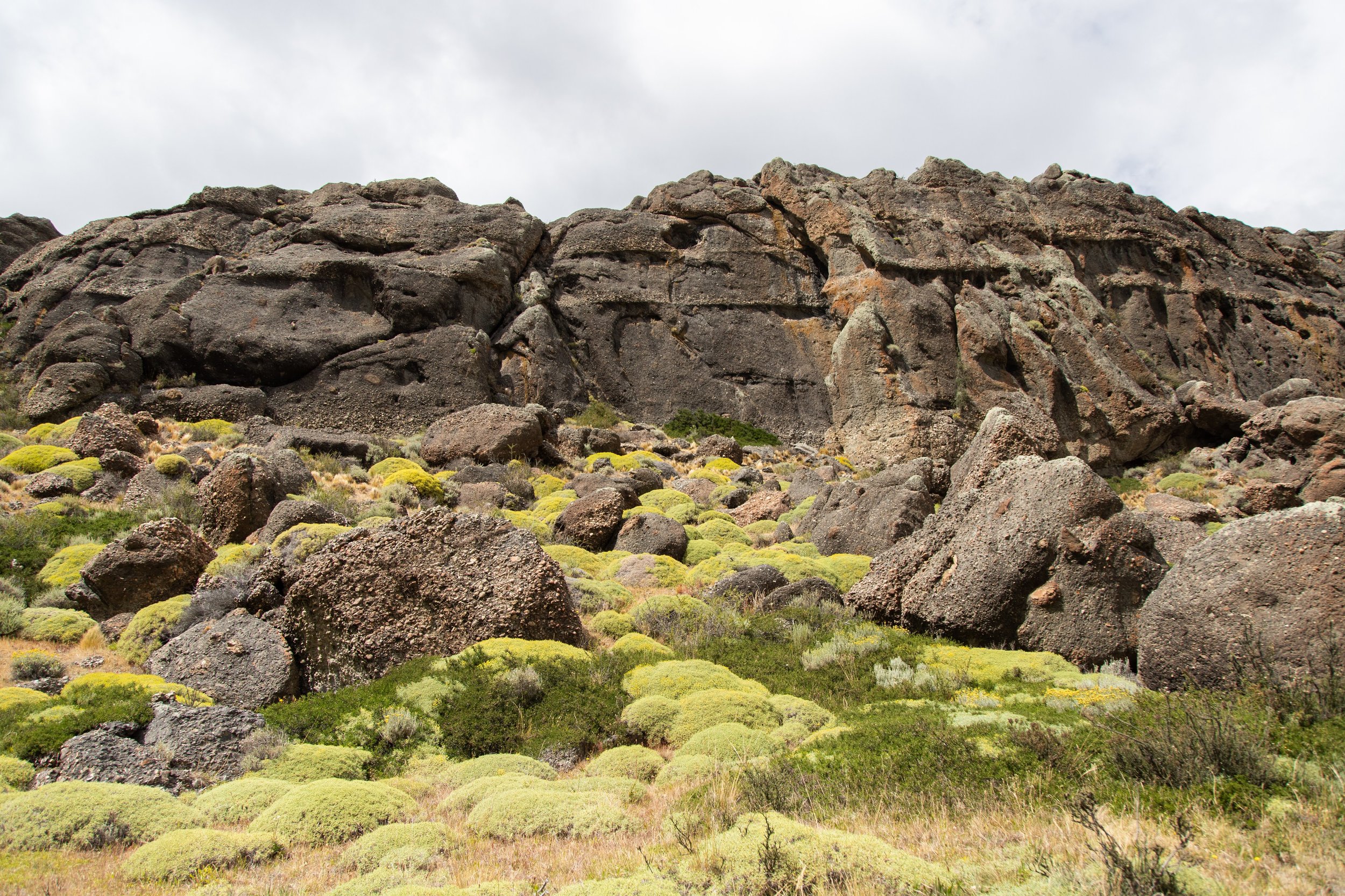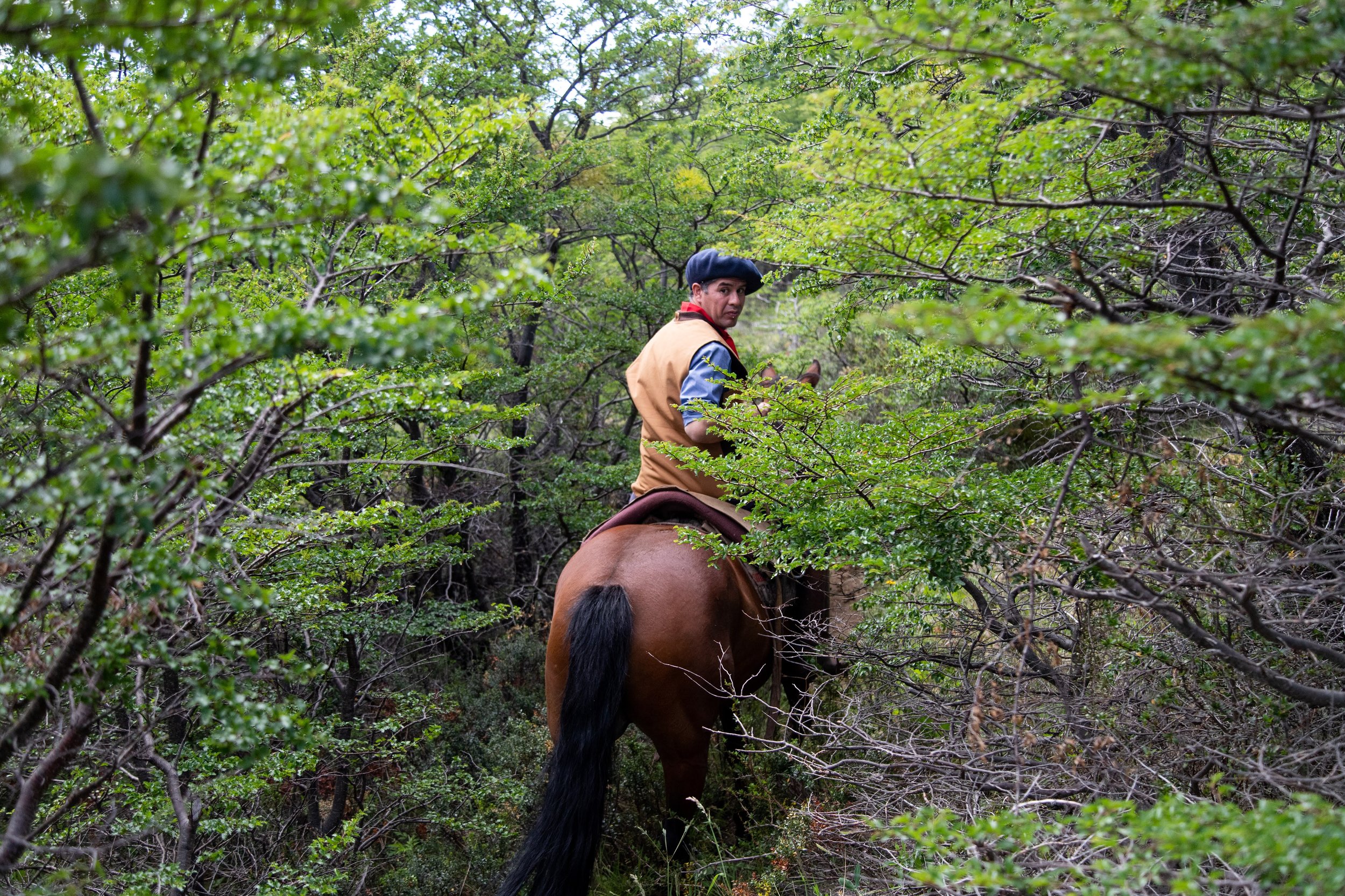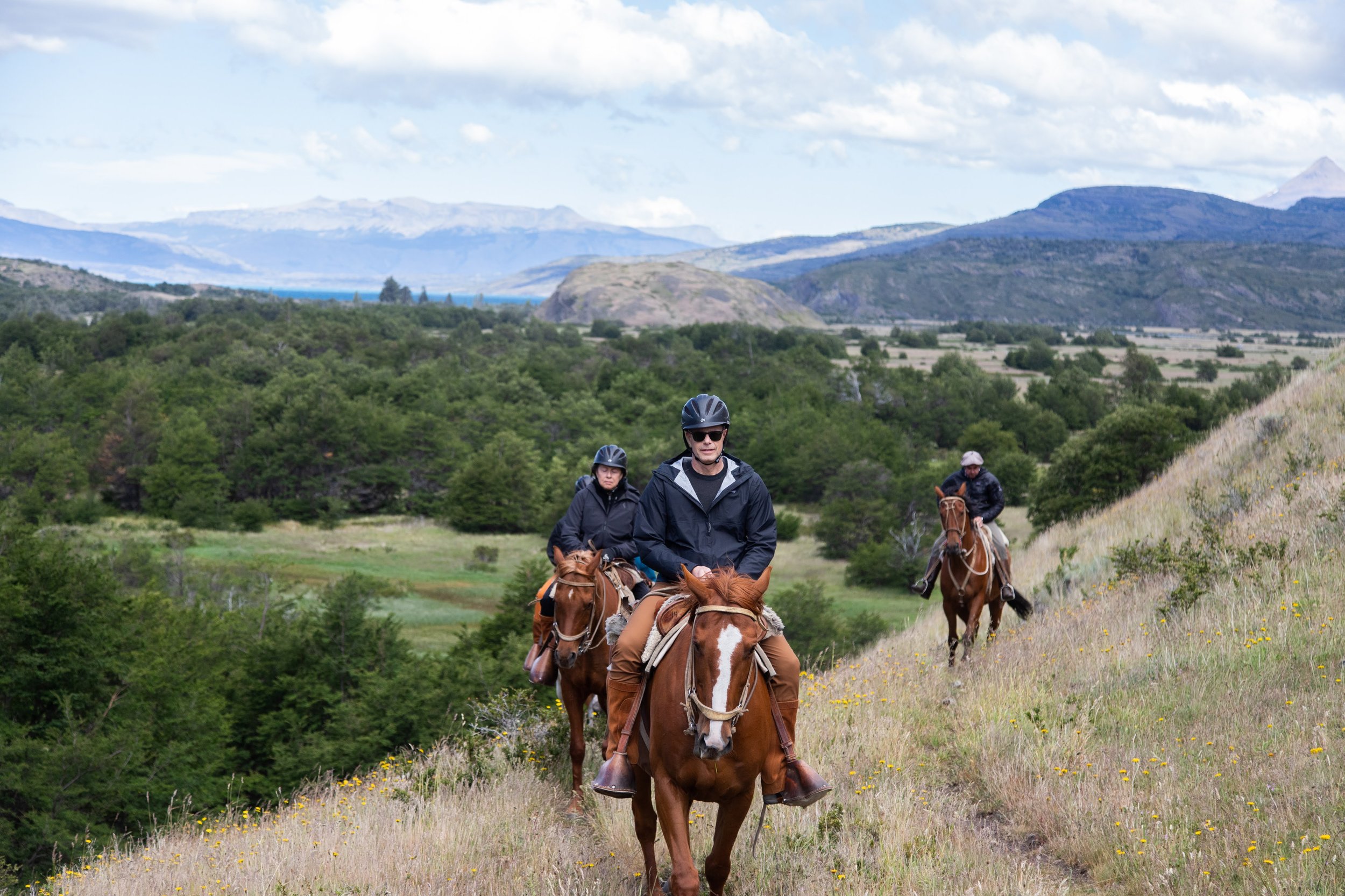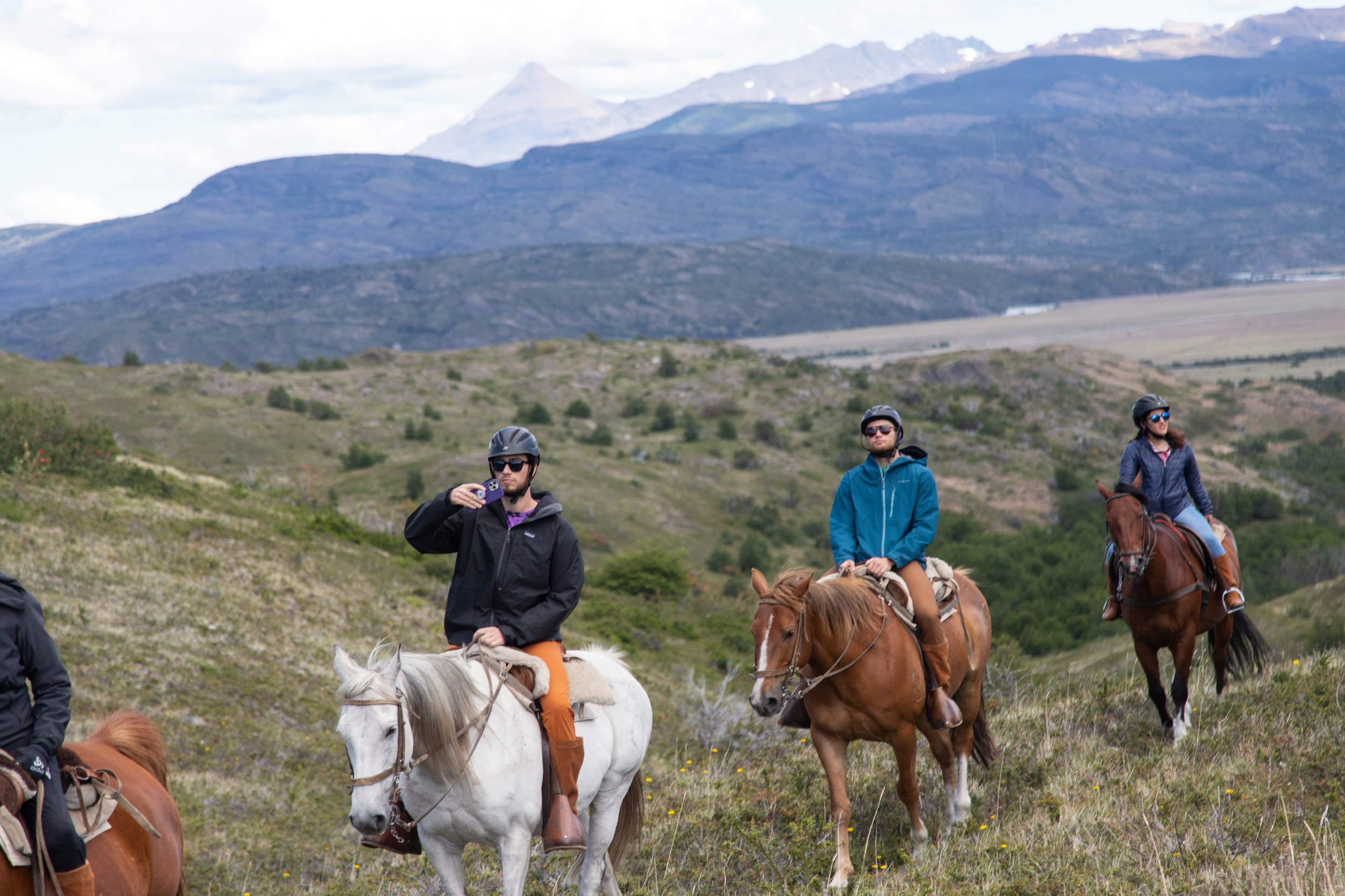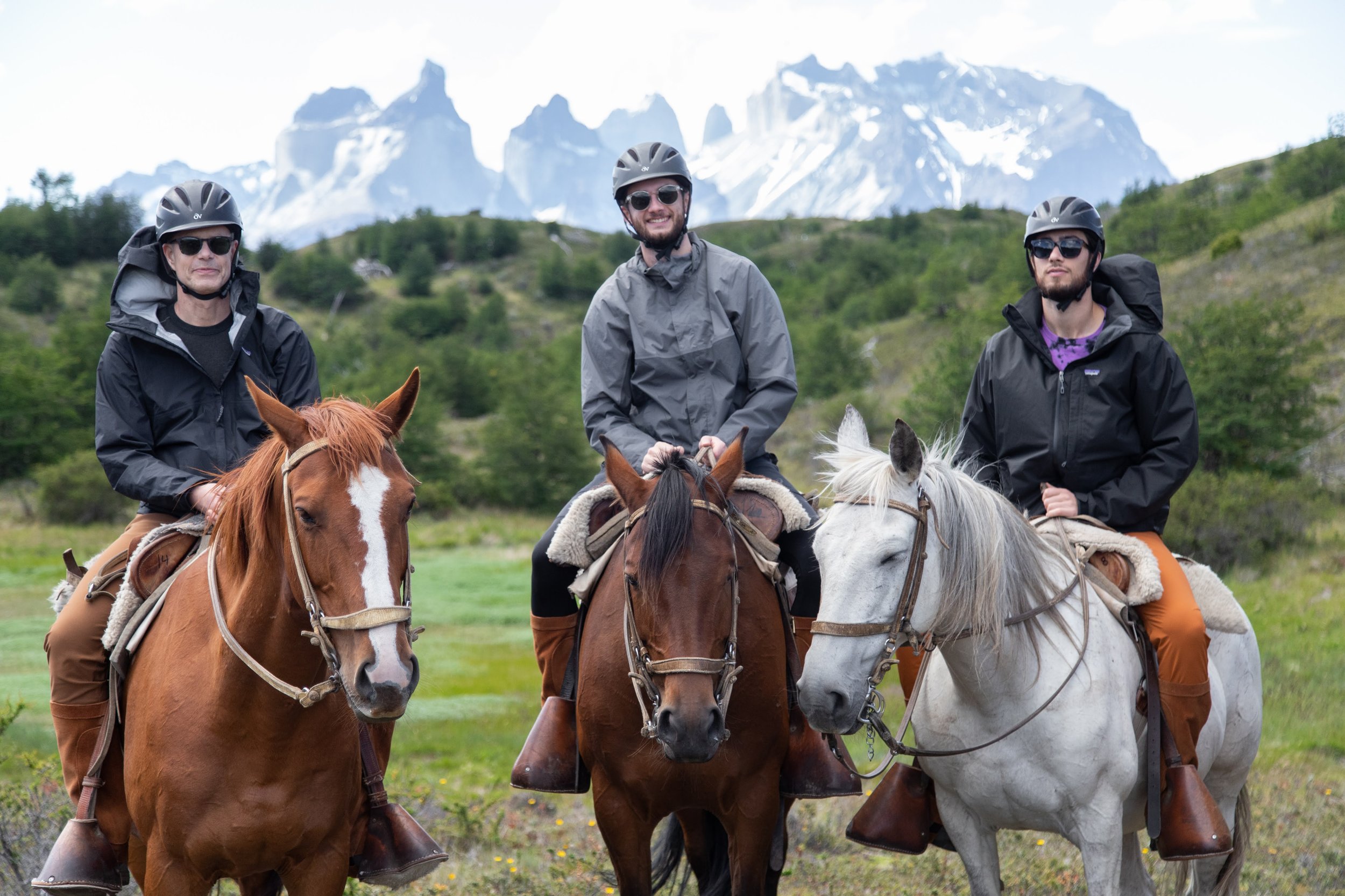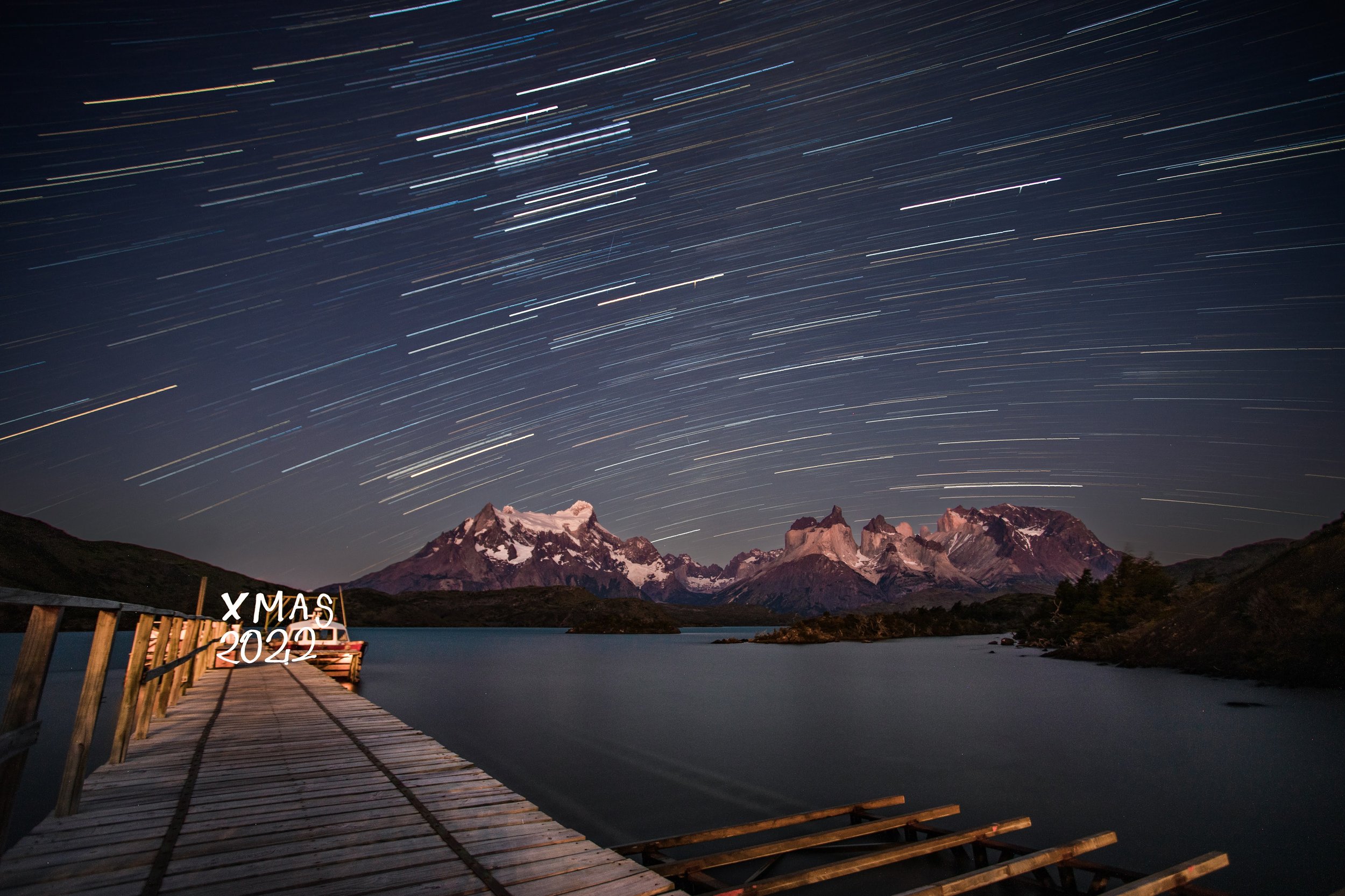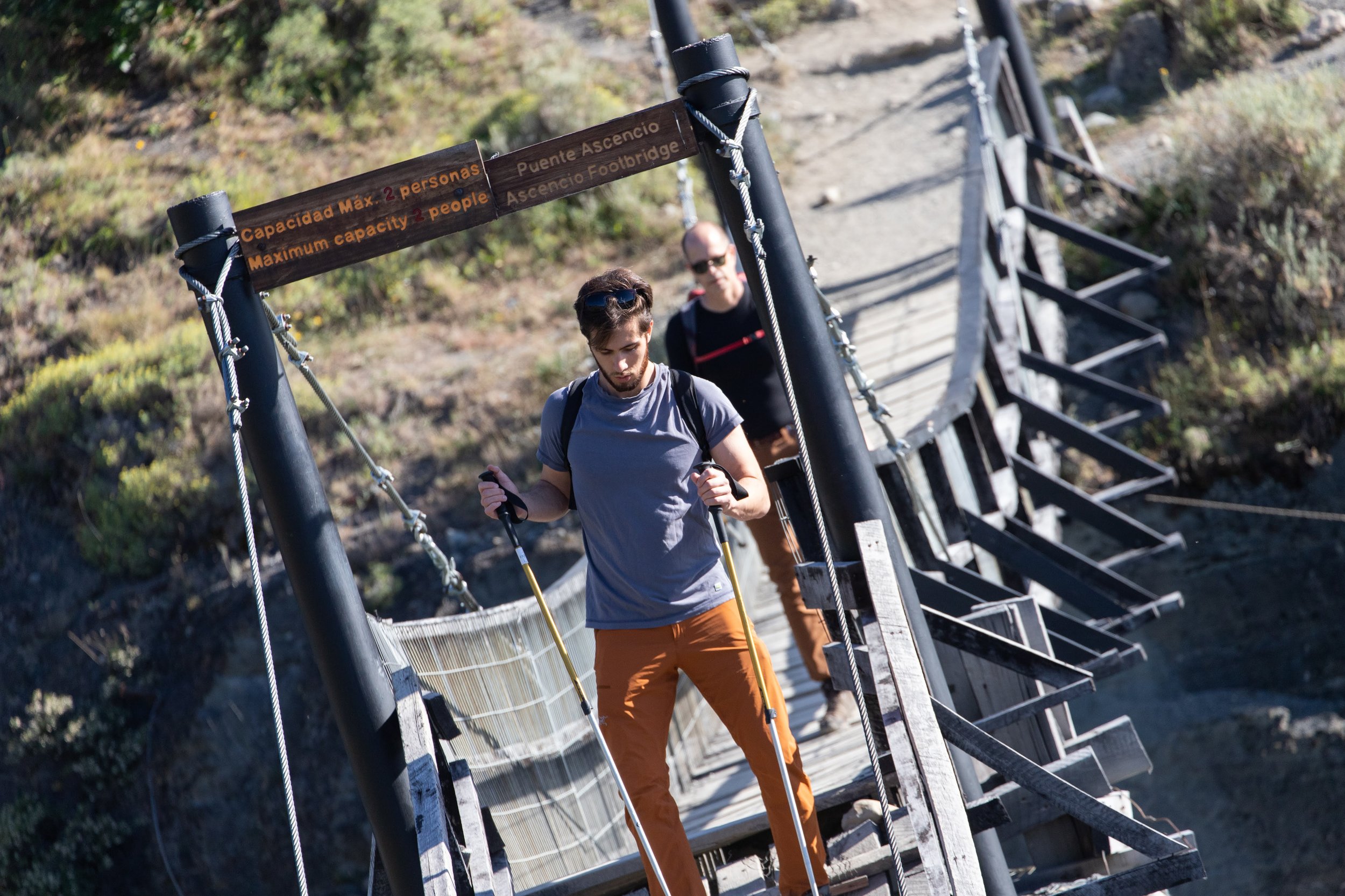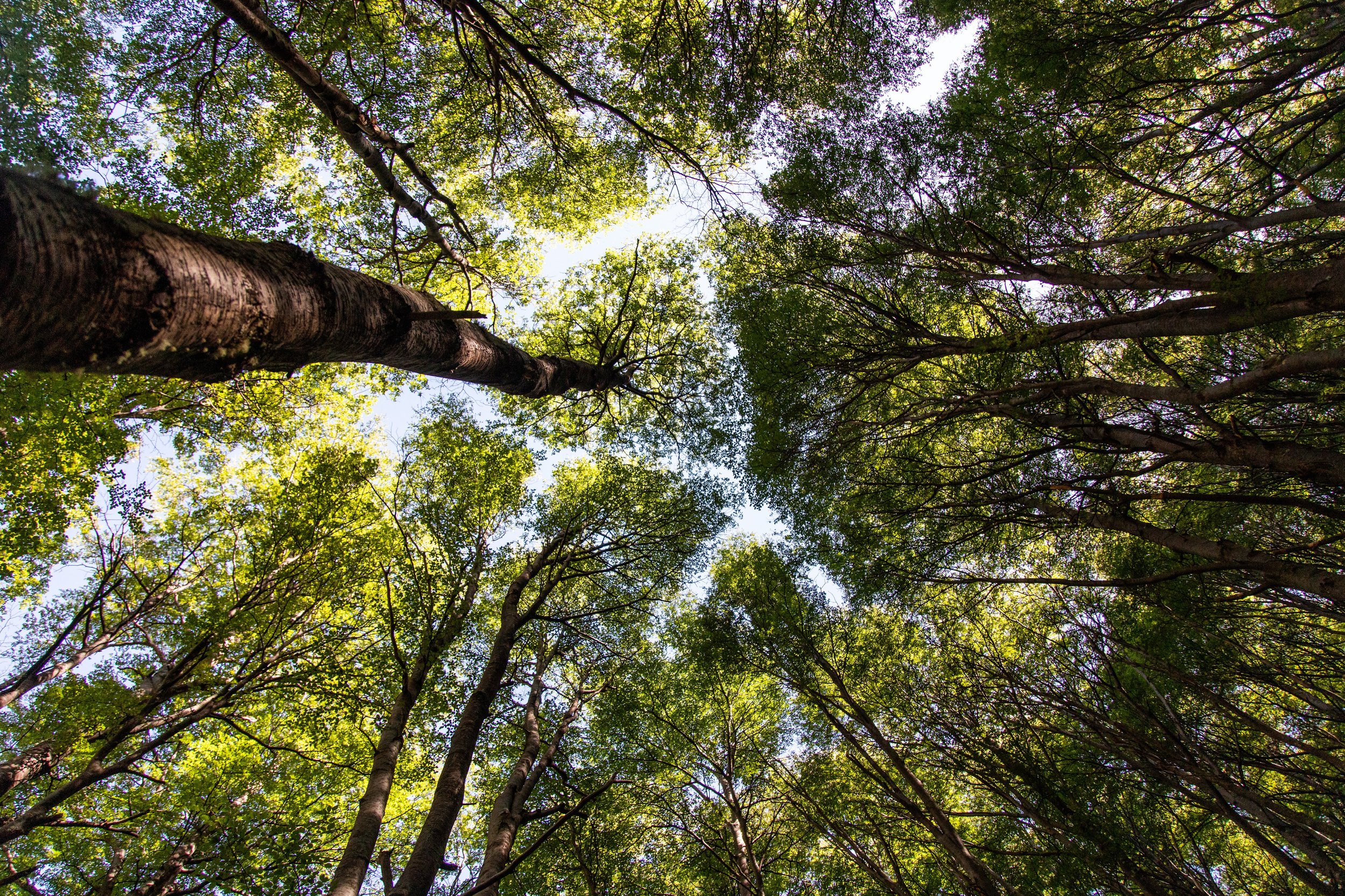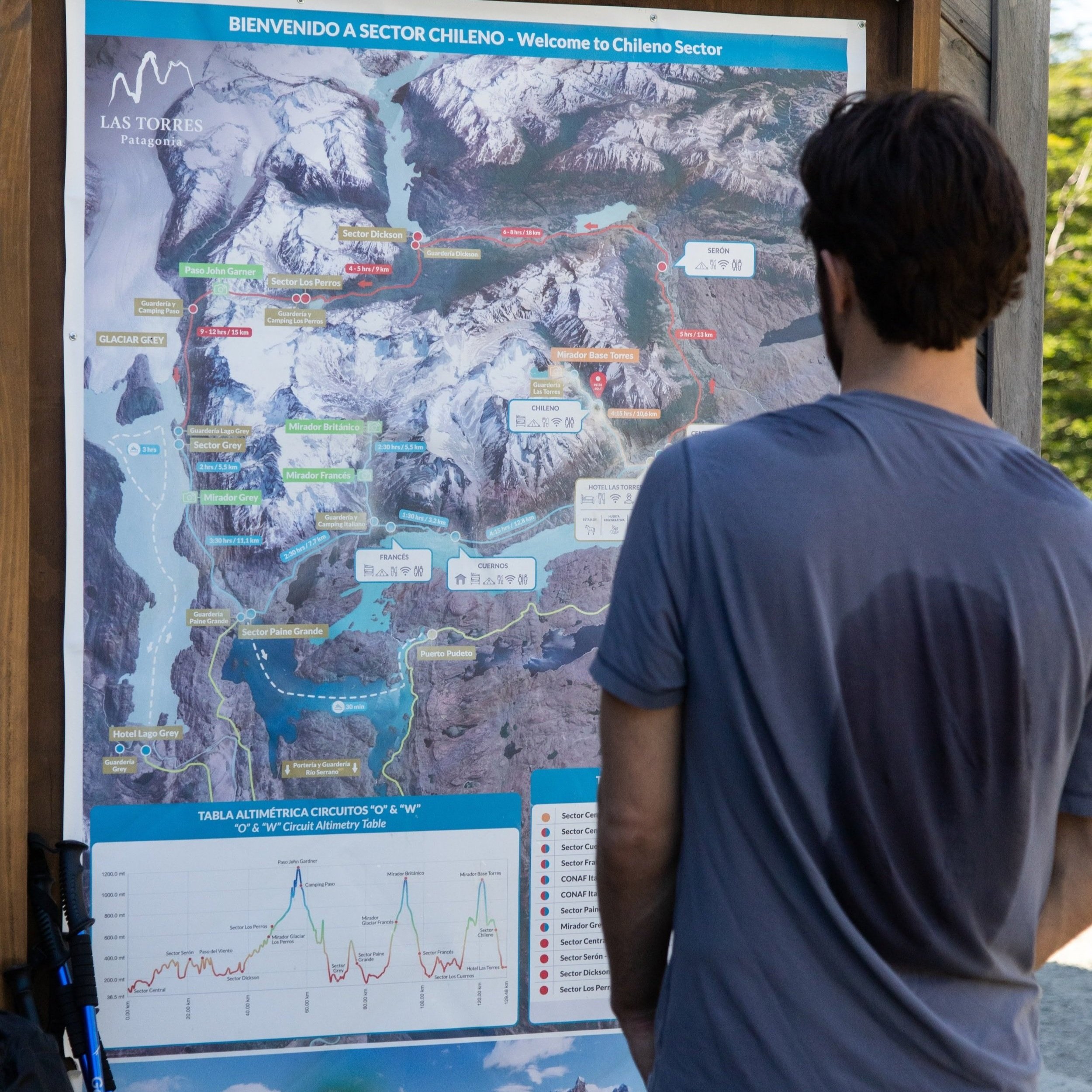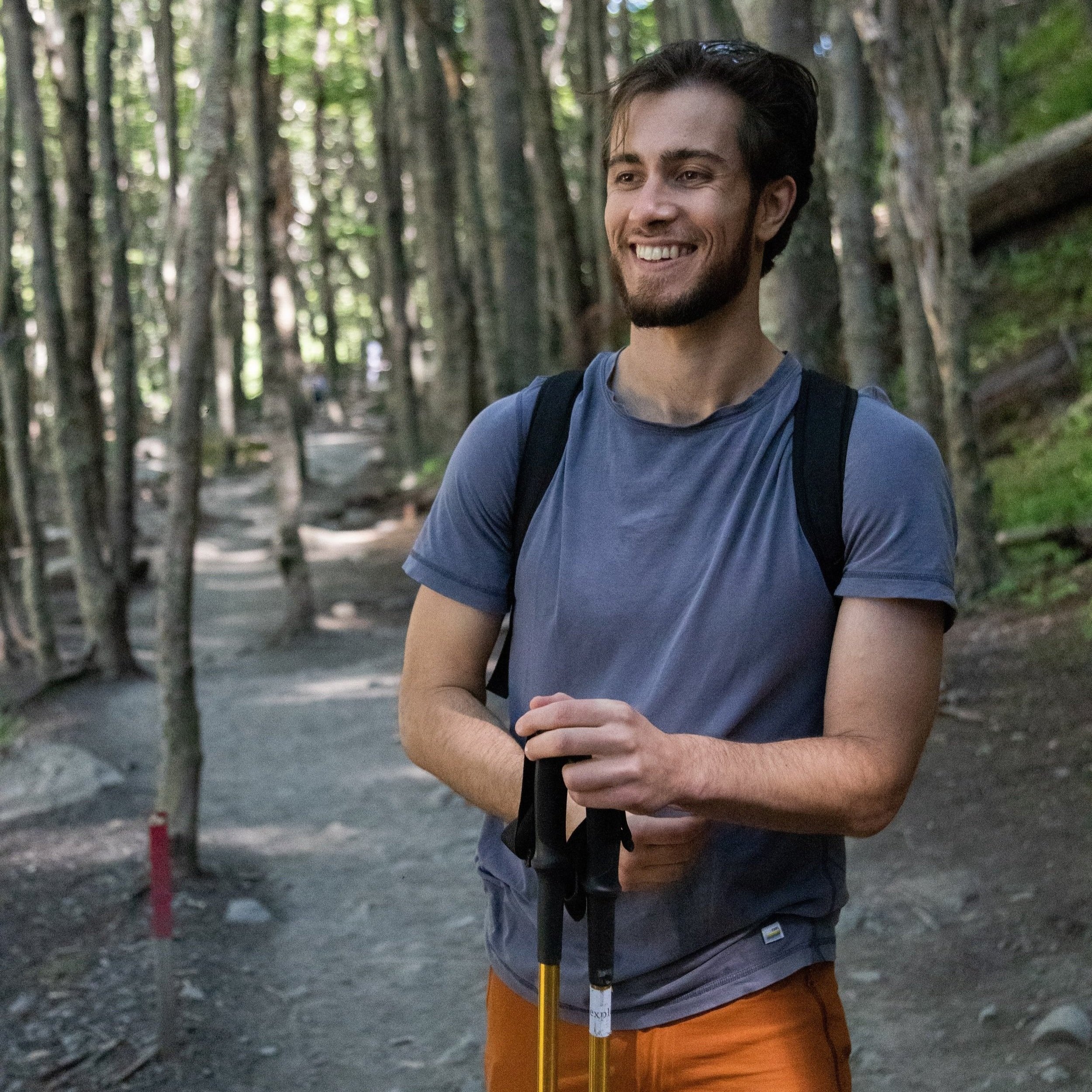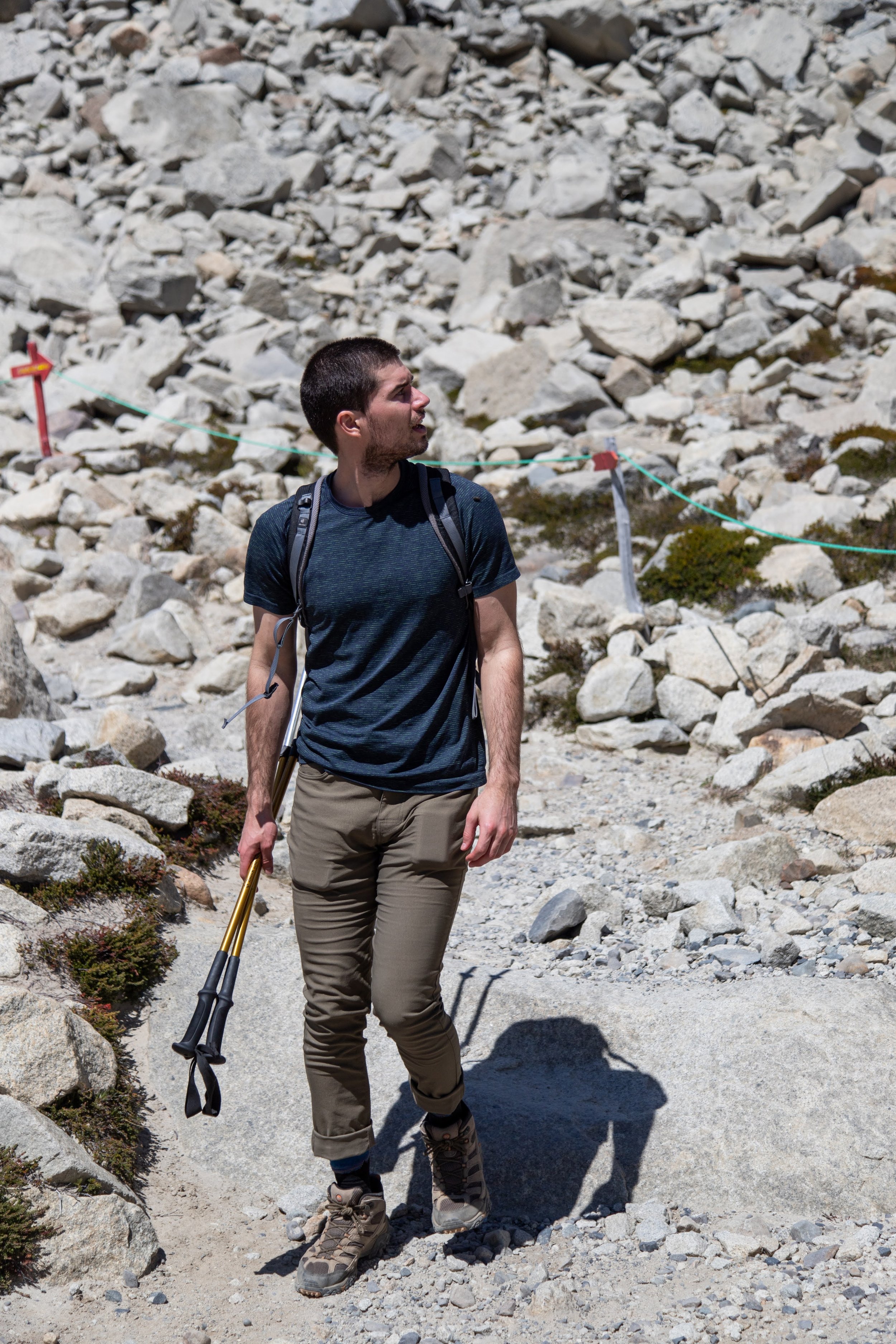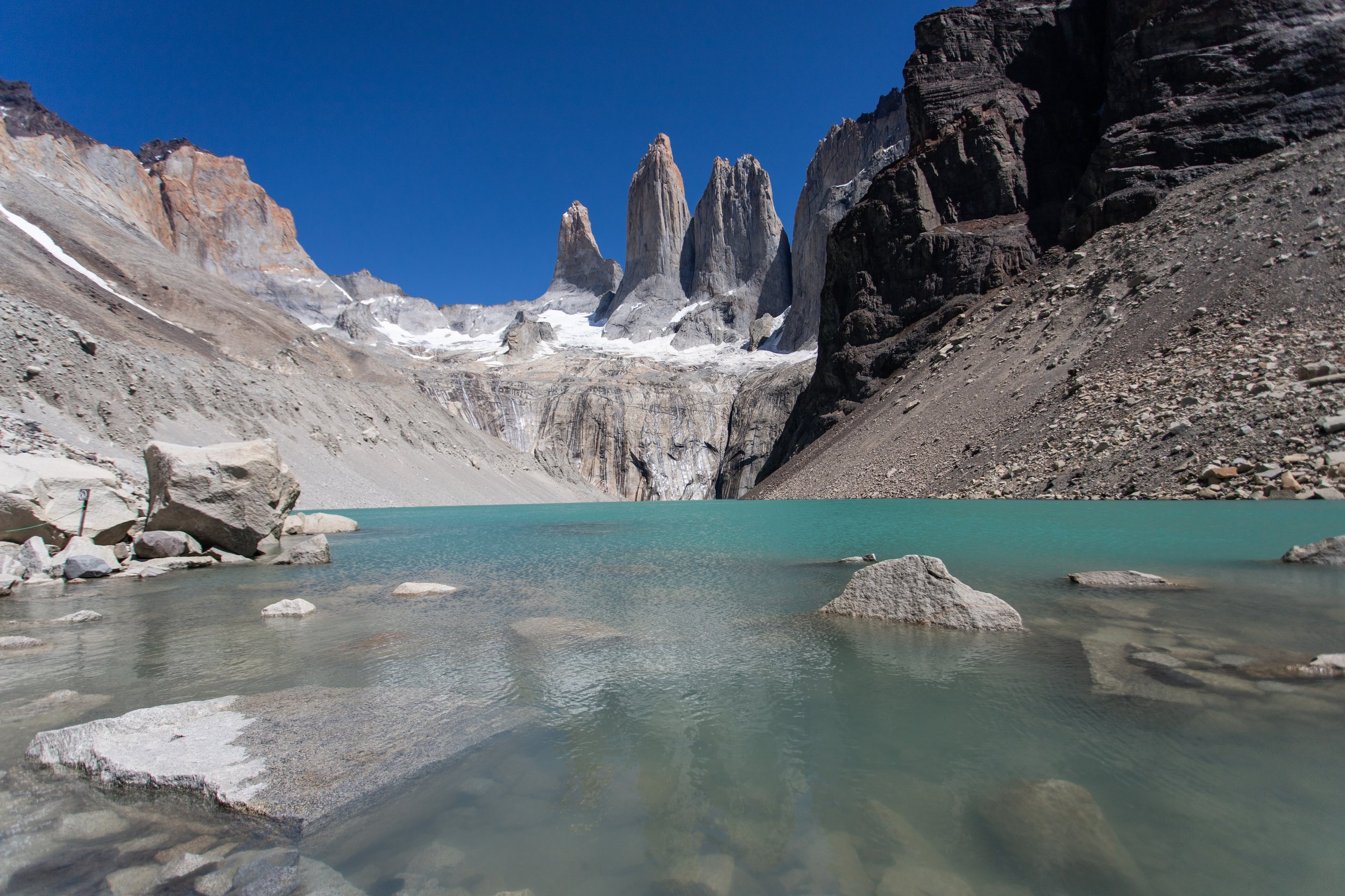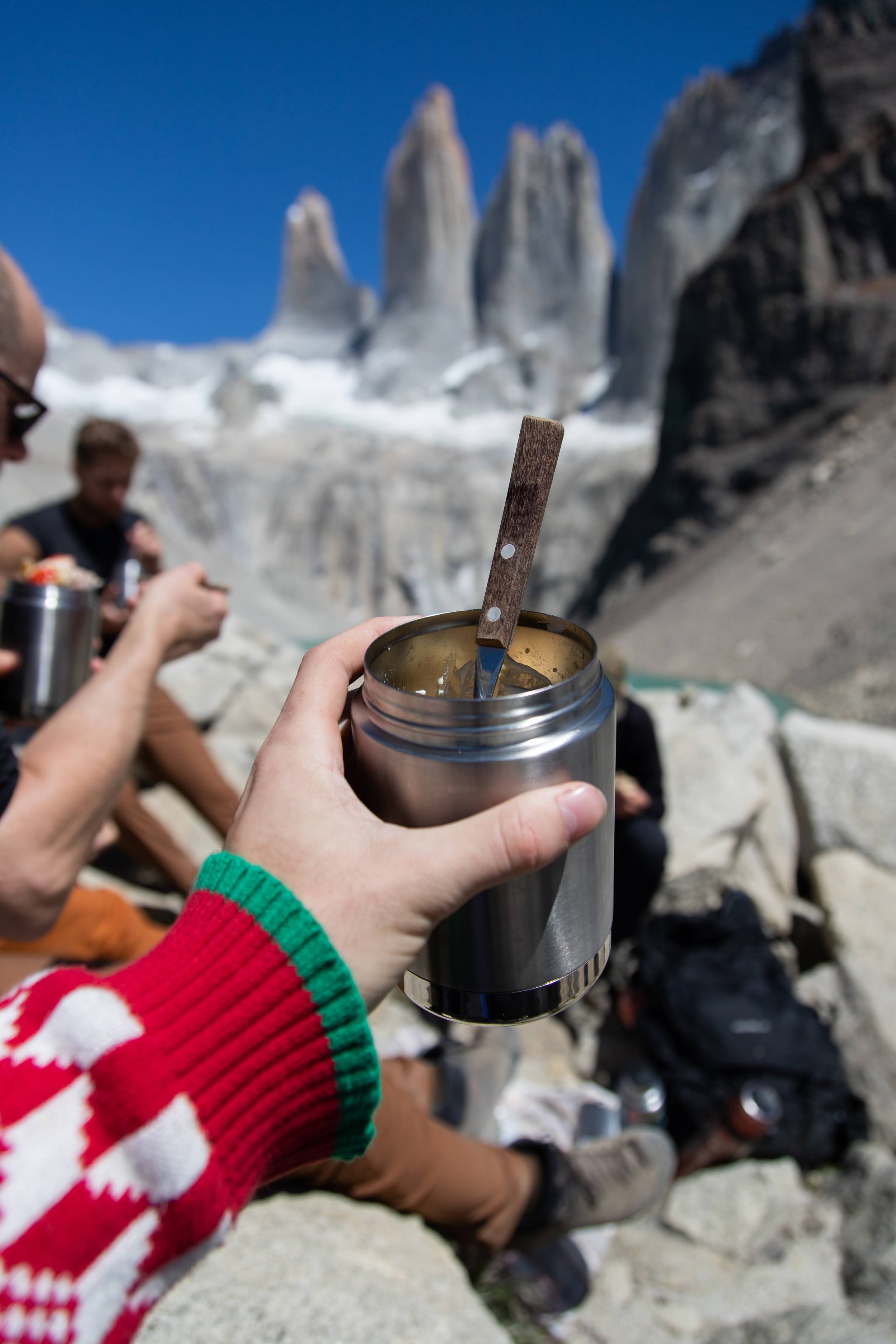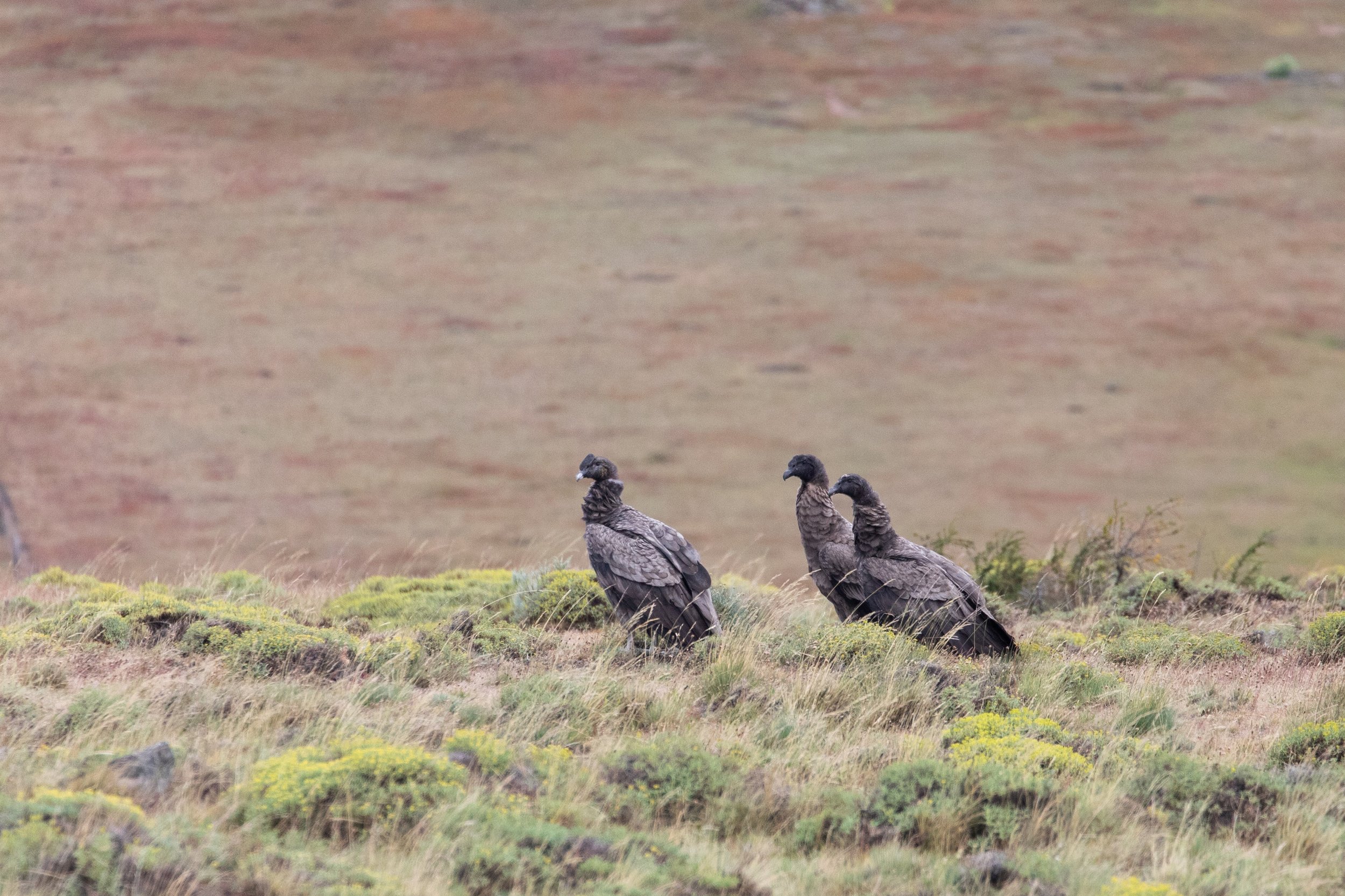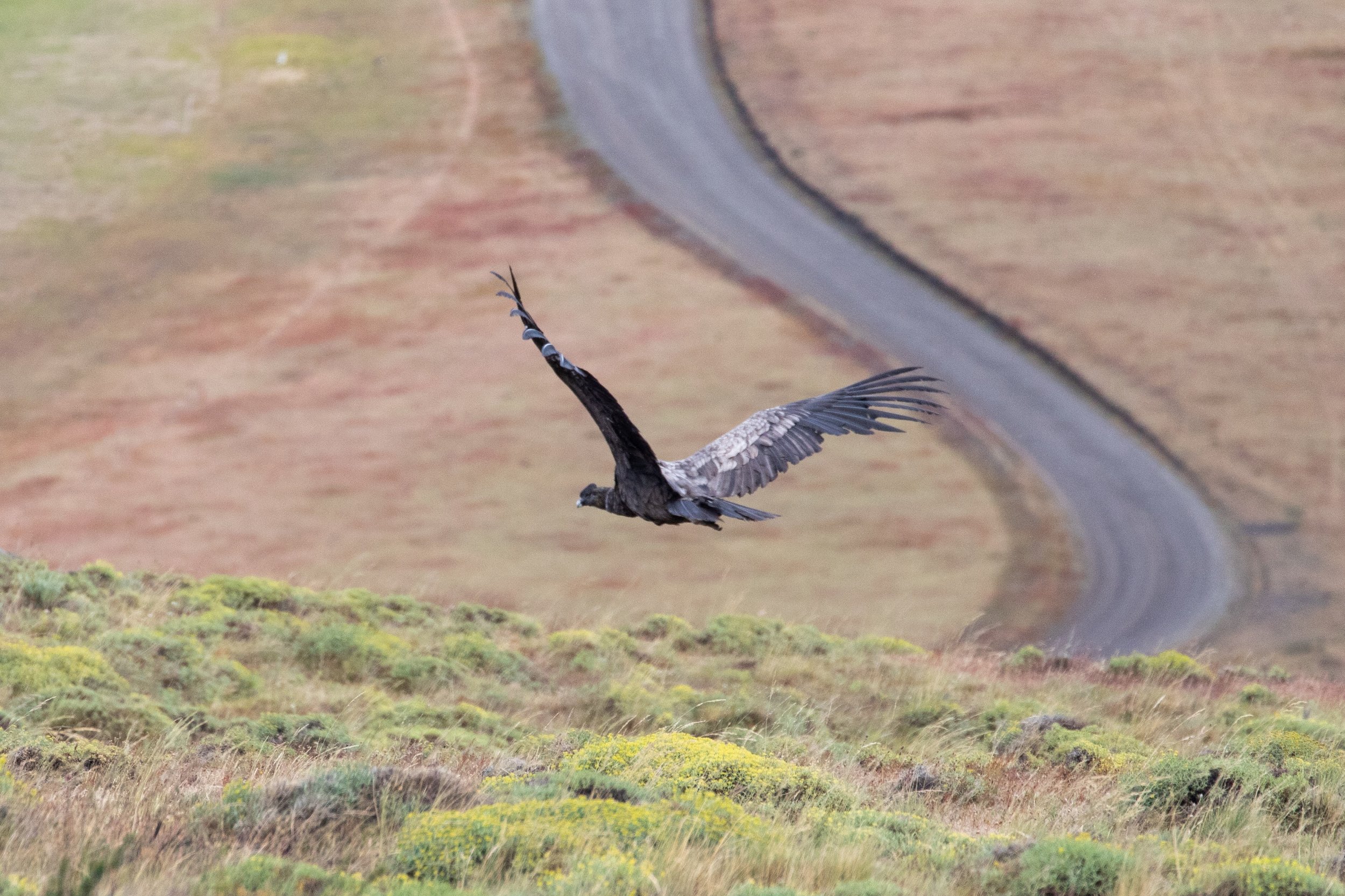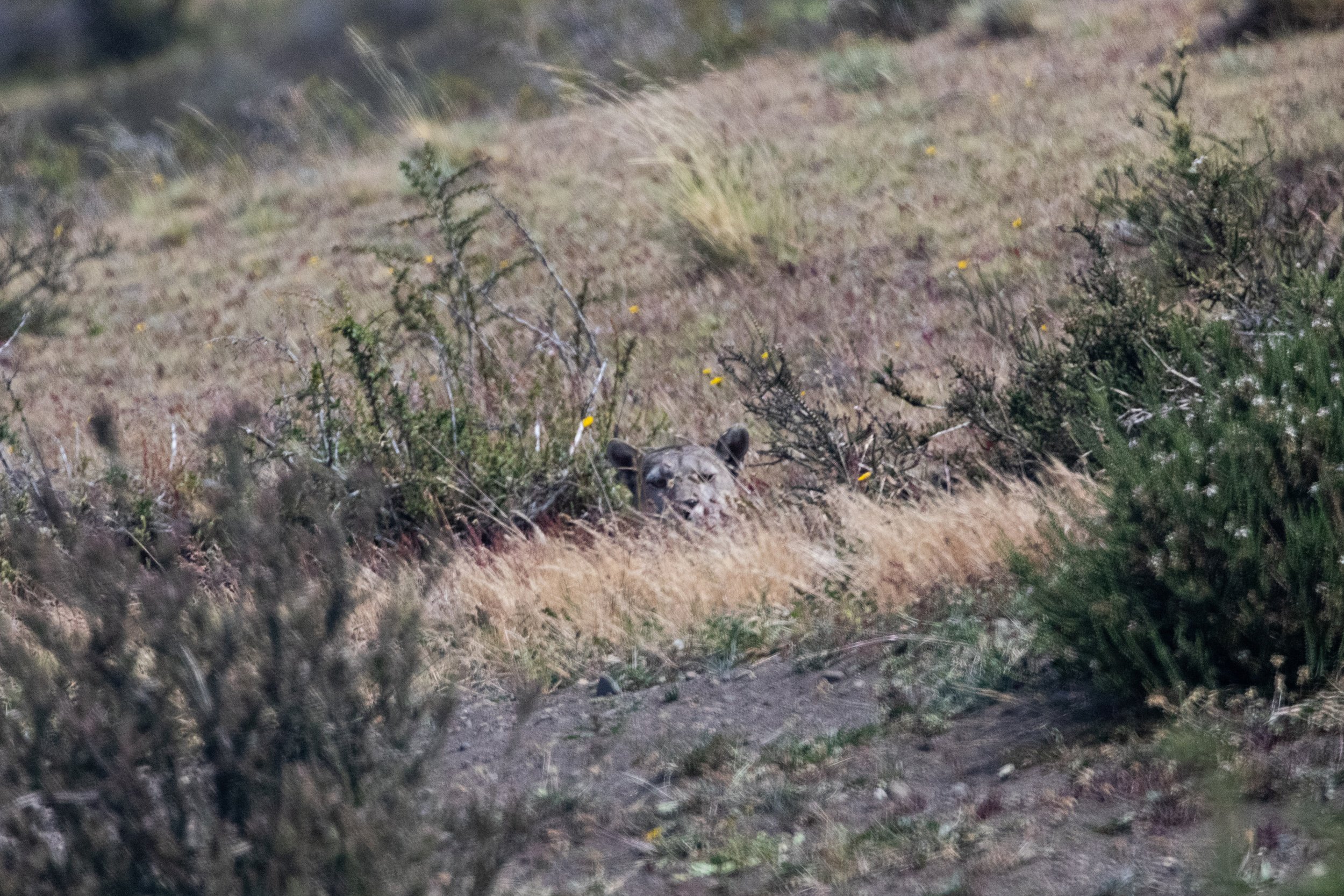S. American Advent — Part Three: The Towers
I woke up on Christmas Eve, our third full day in Patagonia, with my body still in rough shape.
We’d originally planned to take advantage of today’s low winds and tomorrow’s clear skies to hike, respectively, the French Valley and Base Torres. However, each would be long, and we only had so much hiking left in us after the first day’s trek had gone 8 miles longer than expected. Thus, we decided to keep today more relaxed before trying Base Torres tomorrow, which, based on another family’s rave reviews sounded like a can’t-miss experience.
Ray opted for a full spa day at the hotel, but the other four of us headed to the steppes for a relatively short and flat morning stroll.
To me, this was the most tranquil walk of our entire trip. We began on a slight uphill, open land in every direction, with little life to be seen save for a hare hopping down the trail ahead of us. Before long we’d reached a massive conglomerate rock, on the overhang of which the indigenous Aónikenk people had made cave paintings over 6,000 years ago.
From the viewpoint at the rock, more signs of life emerged, starting with a herd of 20 guanaco grazing below. As we descended to a flat stretch of grassland, I spotted a grey blob ahead of us that twitched and then scurried, and I shouted to the others to check out the armadillo.
It kept on scurrying away until it found a nice hiding spot under a bush. That set off a round of squawking from nearby birds, which in turn triggered bleating from the guanaco. Poor armadillo probably just wanted some sleep, yet he’d started this whole cacophony.
As we walked on, guanaco emerged from around seemingly every corner. One stood still close to the trail, tempting my dad and Henry to walk as close as they could before our guide Kata asked them to stop. Another walked over the ridge to sneeze at us. A third grazed with his friends before politely wandering off to urinate away from their lunch. A fourth carelessly sauntered past our group, as if daring us to touch him.
Yes, the place was teeming with guanaco. Which, given we were in prime puma-sighting territory, was a pretty good sign. We scanned and scanned, enough to make our necks sore, but saw only rocks. Even on the van ride back for lunch, we tried our best, squinting far into the distance, yet the puma remained elusive.
Kept expecting a puma to pop out from behind these rocks… but no :(
That afternoon, the four of us continued to the stables for horseback riding with a woman about the same age & appearance as another well-known resort guest. Nor did the similarities stop there, with many of her comments evoking the star White Lotus character:
Upon arriving to the stables she exclaimed “I don’t see my horse!” and appeared perturbed until she noticed a teenager riding past and shouted “hey that’s my horse!! … but you look great on her. I picked her cause she’s beautiful.”
Referring to one of her guides from the other day: “you know… the handsome guy that talks too much”
When asked to join a group photo: “I’m allergic to pictures”
As the four Seebecks posed for a photo opp on our horses, our backs close to the edge of a cliff: “Just back up a few more steps!”
For the sake of this story, we’ll call her Tanya.
As we rode our horses — uphill through trees to a ridge overlooking the mountains and the lake — my dad & Tanya swapped what sounded like their whole life stories. I could only hear bits and pieces, as the wind was so loud that I’m surprised they could even hear each other. This went on until my dad’s competitive horse saw an opening and took off for the front of the line, leaving Tanya mid-sentence.
Back at the hotel, I wound down with a delectable Calafate Sour, which is basically a Pisco Sour made from a Patagonian berry that, incidentally, we’d picked and eaten on the trails our first day. The four of us were enjoying a relaxed conversation when Tanya entered stage left, ready to finish the story she’d started telling my dad on horseback. I listened along in growing disbelief as the story went from colorful to scandalous. You might call it an overshare.
The hotel went all out for its Christmas Eve dinner, featuring decorations, holiday music, and a dessert bar. People got decked out, such as a British family whose men sported blazers & bow ties. We kept it simple though, seeing as we were all focused on tomorrow’s big hike. I even held back from enjoying any drinks with dinner.
We all slept soundly enough that night… with the exception of Johnny, who, realizing it would be the only clear night of our stay, set his alarm for 1am to capture the stars.
On Christmas morning, Henry & I rose with the sun, donned bathing suits & bathrobes, and walked down to the shore of the nearby glacial lake for a polar bear dip, which Henry had in fact been doing nearly every morning.
The frigid water cleansed me as never before — at least never before on a Christmas morning. My body thrummed on our walk back up for breakfast. By now the pain from our hike to Grey Glacier was, if not a distant memory, at least an irrelevant one. My body still hurt a bit, sure, but after days of mental preparation, my adrenaline more than made up for it. I felt pure and strong.
After breakfast, our group for the day — the five Seebecks, a guest named Jonathan whose son Sam had opted for a spa day, and our guide Fabian — hopped in the van and drove 40 minutes to the trailhead, where we stepped out to a deep blue sky, not a cloud to be seen.
As we crossed a small bridge and began the first stretch of the hike, Fabian posited that this would be perhaps the most crowded trail in Chile today, which made sense given that people who’d traveled all the way to the end of the continent would be hard-pressed to pass up such perfect conditions to see the iconic towers.
That first stretch took us straight uphill, fully exposed to the morning sun. We mostly tread the brown dirt of what might have been a dry riverbed, the banks lined with grass, bushes, and the occasional tree.
This hike certainly qualified as a moving meditation. I focused only on my body and surroundings, and time moved at another pace. For instance, I couldn’t tell whether that first uphill stretch took one hour, or two, or even three. It seemed to take both an eternity and no time at all, and, both eventually and suddenly, we turned a corner behind which unfolded a river valley, in which a forest of dark green huddled around a bluish-white streak of water.
We descended into the valley, crossing a bridge to the refugio for a quick rest stop before continuing into the forest. Here we encountered terrain that Fabian called “mostly flat” and Jonathan called “Patagonia flat,” meaning constant ups & downs that, while a bit tiring, balanced each other out.
That trek through the woods rivaled the prior morning at Aónikenk and two days prior at Pingo Chorrillo as one of the trip’s most peaceful moments. That day was pure Patagonian summer: warm enough for short sleeves, refreshingly cool in the shade, and yet never too hot in the sun.
Exiting the forest, we reached the final stretch, which would take us virtually straight up for 1200 vertical feet. As we took one final rest, Fabian told us about the region’s geology and how many consider the towers to be one of the most important geological spots in the world, on account of the magmatic intrusions that formed the massif and the powerful glacial erosion that swept much of the rock away.
Then it was time to go, and we began the steep climb up massive rocks. This really got my adrenaline pumping. I now understood what Fabian had meant when he’d referred to this stretch as his favorite part of the hike.
Yet the trail was fairly crowded, and when a group of slow people bottlenecked in front of me, I couldn’t handle the stopping and started passing them, jetting straight to the top, far ahead of the rest of my family even.
I finally felt in flow, truly inspired for the first time all trip. Maybe it was the tangible goal dangling right in front of me, or the revitalization of my short-twitch muscles from my football days, or the balance challenge of a rock shifting underfoot, or the physical challenge of using my hands to climb. In a flash, I’d reached the breathtaking summit.
Perhaps I shouldn’t quite call it the summit though, as I’d reached the end for us but not the top — the only way to the top of the towers would be to break out the crampons and harnesses and mountain climb in earnest.
I found a viewpoint from which I could clearly see all three towers. Underneath them lay a sheet of ice, from which stretched thin grey tears, which I eventually realized aren’t frozen but rather are the running streams that keep the glacial lake full.
Soon my brothers appeared, with Jonathan and Fabian arriving with my dad soon after. Johnny decided it was high time to break out his gift for us: a flask of Johnny Walker Blue. “Merry Christmas everyone!”
We lunched on tuna couscous canisters, savoring the rest and the view. We’d seen one condor overhead on our way up, and now another had joined it to circle near their nest to the right of Torre Norte. At one point, a plane flew high above & behind the towers; it felt very out of place. In cities or in suburbs, that sort of sight would fill me with wonder. Here I wasn’t even curious where it was headed.
Ray’s sketch of the three Torres del Paine
The time came for us to begin the long road down. This part actually worried me far more than the ascent, given my shaky knees and their toil during the Grey Glacier situation. Thus I felt surprised upon making it down the steep rocky portion in ok shape. I must say my poles proved invaluable.
Our return trip through the forest flew by, as we paused only at a river to feel the cold glacier air rush off of it, and we soon reached the final push downhill, at which point I started to slow down significantly. While I remained ahead of Jonathan and my dad, my brothers ended up far in front of me with Fabian, and I missed hearing his folk tales about the Sierra Baguales — haunted by wild horses captive to a great devil spirit “Gualicho” — and about Ascencio Brunel, a horse thief who operated in the Windy Pass.
By the time I reached the bottom, I felt much as I had by the end of Grey Glacier: barely able to walk. Yet we’d made it! We — especially me and my dad — had had our doubts, but we never wavered. It felt like pure victory.
As we lounged in the main common area before dinner, martinis in hand, Tanya entered the chat: “Helloooo Seebecks.” *winks at Henry* “And hello handsome. You know, I have a grandson named Henry.” Then she noticed Ray, whom she hadn’t met the previous day. “Who’s this guy?”
As I waited at the bar for another drink, she started chatting up two women by the self-serve wine dispenser. Reaching for a glass of her own, Tanya’s hand slipped and knocked another glass onto the floor, where it shattered on the bare foot of one of the women she’d been talking to. I stared surreally at her foot as blood started to flow, my mind slow to catch up to my eyes.
Thankfully she didn’t seem too badly cut; as a few attendants came to carry her over to the couch, she laughed as if there were no need for their attentions. Yet a pool of blood remained behind her on the floor. Ultimately, her foot got bandaged up and she proceeded to enjoy dinner as usual.
As did we. Having held back on Christmas Eve, this was our celebration, and we dressed for it.
From my seat at dinner, I had a clear view of the Cuernos del Paine, which, after today’s hike and geology lesson, I could now appreciate in full. In the picture below you can see it all: how the grey rock marks the valleys carved by the glaciers, while the black rock marks that which has been left alone since forming from magma. Keying on the pattern of black rock, I tried to piece together the puzzle and imagine what the mountain range had looked like before the glaciers, many millions of years ago.
We observed the rest of the room and discussed a few of the guests, many of whom Henry had met during his daily visits to the spa. For instance:
“Didn’t you get in a game of chicken with a 13-year-old?” “Well, we were both in the cold water and he said he could stay in longer than me, so I had to stay in.” “Did you win then?” “Well, I saw that he wasn’t going to get out so I decided, for the health & safety of all involved, to end it. By getting out.” “Mhm.”
The next day, our final full day in the park, we journeyed overland to the east on a sort of safari. At Laguna Amarga, we stopped for a closer look at the flamingos on its icy shore. They felt almost out of place, given that I’d only ever seen wild flamingos in Tanzania. They largely kept their heads in the water, in earnest pursuit of their 500-gram daily diet of shrimp.
Next we stopped at the Cascada del Río Paine, which would have fit right in itself in Africa, and I wondered at the sheer volume of melting ice it takes to keep these rivers going. I suppose it makes some sense in the summer, but what about the winter? Do these rivers come to a standstill? At least before the glaciers started receding, you’d think the ice growth each winter would have to offset each summer’s melt.
We’d planned a fairly relaxed day — as evidenced by the wine bottles we’d stowed away for lunch — with only a short hike and horseback ride to break up the sightseeing. Now came the hike, and I expected an easy stroll, but at the very moment we stepped out of the van it started to rain… and then hail.
Thus we finally got our taste of a Patagonian winter, or at least came to believe the adage that here you can see all four seasons in just one day. Henry, Ray, and I jetted as fast as we could uphill. Jonathan (from the prior day’s hike), Johnny, and my dad followed behind with our guide Alejandro, who’d deftly changed into rain pants. Jonathan’s son Sam had joined us today, but decided he was better off remaining in the warm comfort of the van.
I walked sideways so as to use my jacket’s hood to prevent the hail from hitting me in the face. As the hail abated, the rain kept coming, and I found myself soaked head-to-toe. Of course, this was the day I’d run out of wool socks and wore cotton. They stayed wet and cold for the rest of the day.
Within about twenty minutes, though, the wind swept the clouds away and the sun returned in full force. Furthermore, our uphill journey reached its end, and we walked across a grassy plateau, and then downhill through a grove of trees back to our van.
On our way to lunch, we stopped to observe three juvenile condors perched on the edge of a ridge. They sat still for a while before slowly taking off one-by-one and gliding away on the warm air currents that enable their heavy bodies to stay aloft without much flapping of their wings.
We lunched at Explora’s eastern outpost, little-used save for horseback riding and the occasional asado. Sadly the parrilla was closed today, but we did enjoy a substantive lunch, washed down by healthy portions of Odfjell Orzada Carignan.
After warming up by the fire, we walked to the stables to commence our afternoon activity. Today the gaucho paired me with more of a free-spirited steed, who alternated between trying to eat and trying to trot, the latter of which didn’t bother me so much but sure did bother the gauchos. They exhorted us to keep a tight rein so as to establish dominance.
After twenty minutes of rain it got sunny again and we ducked past branches (though one did hit me in the face) into a wooded valley. After emerging back into open space, Alejandro encouraged Johnny to get out of line and trot — “go ahead, have fun!” — and he did, only for another guide to yell at him to stop.
Our drive back to the hotel was our last chance to spot a puma. Most of our van had been fixated on it, including Alejandro, who kept promising we’d see one. I knew the odds weren’t great though. Plus I felt tired from the wine and perhaps the past few days in toto. I started nodding off.
Suddenly the car stopped and my eyes opened to Alejandro’s shout: “There’s a Puma!” Our driver had somehow sighted one hiding in this ditch on the side of the road. We backed up and stared where he pointed, though I couldn’t see a thing.
We backed up further and Alejandro whispered to us to get out of the van, and we took up a position from which we could see down the ditch. Now I thought I could see something, but it was pretty much just a slightly different shade of color than the rest of the brush.
But then the puma began to move. It crawled up out of the ditch, looked around, and stalked across the road. We got back in the van, following it as it approached a group of guanaco. It got closer and closer, trying to remain hidden behind the bushes, until… the guanaco sounded their bleating alarm and fled.
Back at the Explora, the bartender fixed me up my final old fashioned of the trip. When my dad expressed how much we’d enjoyed it, he lit up and replied that it’s his favorite drink, telling of his special preparation process, the highlight of which assuredly was when he coats the entire interior of the glass with liquid maple sugar.
With dinner, I enjoyed more of my new favorite wine, (at least of those they had to offer), that Odfjell Orzada Carignan. The menu tonight was the same as our first night, perhaps signaling that our time here had run its course.
We departed the next morning at 6am, before breakfast had even opened up. On our drive out of the park, I mostly stared out the window, too tired to do much else. I watched a lone flamingo fly though the air, its wings a darker pink than its body. I watched a white dog inside a sheep pen run alongside our car until it fell behind; at the end of the fence, an identical white dog stood sentinel at the corner as if to say goodbye. Soon after that we reached customs and crossed into Argentina.
Most photos courtesy of Johnny! See here for his full Patagonia album, as well as one featuring virtually every animal we saw.
In Part Four, we wrap up our trip in Buenos Aires.
